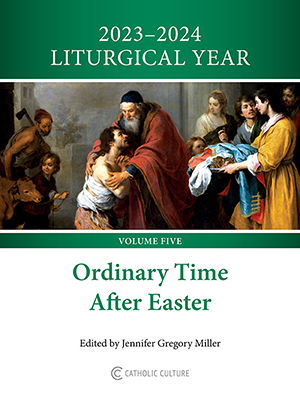‘In persona episcopi’: Pope Francis continues to unite Italian dioceses
December 12, 2023
Continuing a trend that has accelerated in recent years, Pope Francis on December 11 united two Italian dioceses in persona episcopi [in the person of the bishop].
While continuing to govern the Diocese of Caserta, Bishop (now Archbishop) Pietro Lagnese will also govern the Archdiocese of Capua.
Such arrangements for Italy’s 226 dioceses have become increasingly routine:
- In February 2019, Pope Francis united two Italian dioceses (Tivoli and Palestrina) in the person of Bishop Mauro Parmeggiani.
- In April 2020, Pope Francis united two Italian dioceses (Nuoro and Lanusei) in the person of Bishop Antonio Mura.
- In June 2020, Pope Francis united two Italian dioceses (Camerino-San Severino Marche and Fabriano-Matelica) in the person of Archbishop Francesco Massara.
- In December 2020, Pope Francis united two Italian dioceses (Modena-Nonantola and Carpi) in the person of Archbishop Erio Castellucci.
- In February 2021, Pope Francis united two Italian dioceses (Teano-Calvi and Alife-Caiazzo) in the person of Bishop Giacomo Cirulli.
- In May 2021, Pope Francis united two Italian dioceses (Pozzuoli and Ischia) in the person of Bishop Gennaro Pascarella.
- On June 19, 2021, Pope Francis united two Italian dioceses (Pitigliano-Sovana-Orbetello and Grosseto) in the person of Bishop Gianni Roncari, OFM Cap.
- On June 26, 2021, Pope Francis united two Italian dioceses (Assisi-Nocera Umbra-Gualdo Tadino and Foligno) in the person of Archbishop Domenico Sorrentino.
- In July 2021, Pope Francis united two Italian dioceses (Oristano and Ales-Terralba) in the person of Archbishop Roberto Carboni, OFM Conv.
- On February 12, 2022, Pope Francis united two Italian dioceses (Civitavecchia-Tarquinia and Porto-Santa Rufina) in the person of Bishop Gianrico Ruzza.
- On February 19, 2022, Pope Francis united two Italian dioceses (Turin and Susa) in the person of then Archbishop-elect Roberto Repole. This diocesan consolidation was remarkable because at the time of his appointment, Father Repole had no experience in governing a diocese—and now he is responsible for two.
- In May 2022, Pope Francis united two Italian dioceses (Gubbio and Città del Castello) in the person of Bishop Luciano Paolucci Bedini.
- In July 2022, Pope Francis united two Italian dioceses (Siena-Colle di Val d’Elsa-Montalcino and Montepulciano-Chiusi-Pienza) in the person of Cardinal Augusto Paolo Lojudice.
- In November 2022, Pope Francis united two Italian dioceses (Frosinone-Veroli-Ferentino and Anagni-Alatri) in the person of Bishop Ambrogio Spreafico.
- In January 2023, Pope Francis remarkably united two Italian archdioceses (Pesaro and Urbino-Urbania-Sant’Angelo) in the person of Archbishop Sandro Salvucci. The prelate is now simultaneously the metropolitan archbishop of two ecclesiastical provinces—much as if the same prelate were simultaneously Archbishop of Omaha and Archbishop of Kansas City, and thus the metropolitan archbishop for all the dioceses in Nebraska as well as all the dioceses in Kansas.
- In February 2023, Pope Francis united three Italian dioceses (Teano-Calvi, Alife-Caiazzo, and Sessa Aurunca) in the person of Bishop Giacomo Cirulli; he had governed the first two dioceses concurrently since 2021.
- In March 2023, Pope Francis united two Italian dioceses (Matera-Irsina and Tricarico) in the person of Archbishop Antonio Giuseppe Caiazzo.
- On June 1, 2023, Pope Francis formed the Diocese of Cuneo-Fossano from the union of the Diocese of Cuneo and the Diocese of Fossano. The two dioceses had been united in persona episcopi under three successive bishops since 1999.
- On June 20, 2023, Pope Francis repeated his May 2021 precedent and kept two Italian dioceses (Pozzuoli and Ischia) united in the person of Bishop Carlo Villano.
- In September 2023, Pope Francis united two Italian dioceses (Frascati and Velletri-Segni) in the person of Bishop Stefano Russo.
- In October 2023, Pope Francis united two Italian dioceses (Pescia and Pistoia) in the person of Bishop Fausto Tardelli.
For all current news, visit our News home page.
All comments are moderated. To lighten our editing burden, only current donors are allowed to Sound Off. If you are a current donor, log in to see the comment form; otherwise please support our work, and Sound Off!
-
Posted by: Gramps -
Dec. 12, 2023 7:39 PM ET USA
It would seem the "smell of the sheep" gets fainter and fainter the more the flock size is increased for the single shepherd.
-
Posted by: feedback -
Dec. 12, 2023 10:44 AM ET USA
It would be good to hear from Francis, or from the Vatican, what are the exact motivations behind this mass "uniting": What is the supposed benefit for the Church: for the faithful, for the priests, and for the bishop himself? In the US, the usual pattern is that the bigger the diocese, the more buffer zones and delegated authority the Bishop needs, the less he knows about his flock and his priests, and the greater opportunities for corruption.







